Kandy is another tourist-attractive city with different colors of culture, religious, natural, and artificial beauty. Traveling to Kandy from Colombo takes a taxi, bus, or train, which takes 3 to 4 hours (depending on the traffic). Kandy is situated 122 km away from Colombo, and it is the second capital of Sri Lanka.
The Temple of the Tooth (Sri Dalada Maligawa).
The Temple of the Tooth (Sri Dalada Maligawa) is one of the most tourist-friendly places in Kandy. To visit the Temple of the Tooth from Kandy city (1.5 km away from Kandy city), you take a tuk-tuk, a taxi, or a walk. The journey takes 10 to 20 minutes. To see this Temple, you must take entrance tickets; you can purchase them at the entrance. With short dresses and shows, visiting the side of the Temple of the Tooth is prohibited because it is a place of religious and cultural value place.

Temple of the Tooth is one of the most famous Buddhist pilgrim places in Sri Lanka because historical data proves that the Sacred Left Canine Tooth Relic of Lord Buddha is there.
Princess Hemamala and Prince Dantha brought the Sacred Left Canine Tooth Relic from ancient India, from Kalinga city to Sri Lanka during Sri Lankan King Keerthi Sri Meghavarna’s era (301 -328).
From then to now, people have total respect for the secret toot relic, worship it, and offer flowers, Parittha (Pirith) chanting, and drums daily. The secret toot relic is placed in a special puja on the Second floor of the building, and it is said to have been set up by King Sri Vikrama Raja Sinha.
King Sri Wickrama Raja Sinha was also considered the last king of Sri Lanka before it became a British colony. Kandy is also considered the last kingdom of Sri Lanka.
The secret toot relic was placed near the king’s Palace. Before Kandy, it was found in various places from the Anuradhapura period, the last of which was Kandy.
When you enter the king’s Palace (presently the Temple of the Tooth), you first find beautiful, painted walls and a corridor. In the Kandian art style, the paintings show colorful flowers and people bringing flowers to the secret Toot relic.
Then, you can see and hear Thewawa (Drummers and the Horanawa, or Kandian pipers) making music concerning the secret Toot relic). Thewawa service is done three times per day,
5.30 am to 7.00 am.
9.30 am to 11.00 am.
6.30 pm to 8.00 pm.
You must climb the steps upstairs to worship and see the secret Toot relic. Sometimes, you must stay in queues with many people, especially on full moon days, special Buddhist religious days, and even the weekends.
Most People offering flowers stand in front of the Karaduwa (A small stupa made of gold (a secret Toot relic placed inside the Karaduwa) And wish for blessings. After worshiping and seeing the secret Toot relic, you can go down the steps and visit other small temples inside the Palace.
Magul Maduwa (Royal Audience Hall)
When you leave the Palace, you can see Magul Maduwa (Royal Audience Hall), Maha Naduwa, or Royal Court. The king made decisions, held royal meetings, and rendered judgments and significant agreements, most of which were done in this building.
On 2 March 1815, Sri Lanka wrote and signed the Agreement (Udarata Giwisuma) with British governor Sir Robert Brownrigg, and hereafter, until 4 February 1948, Sri Lanka became a British colony, which is called British Cyelone. The building is made of wood with a roof and wood pols without walls. Each wood pole wood carving is done using different art.
Next to the Royal Audience Hall, you can visit the Museums and other temples.
Kandy Esala Perahera (cultural and religious event combined with Sri Dalada Maligawa).
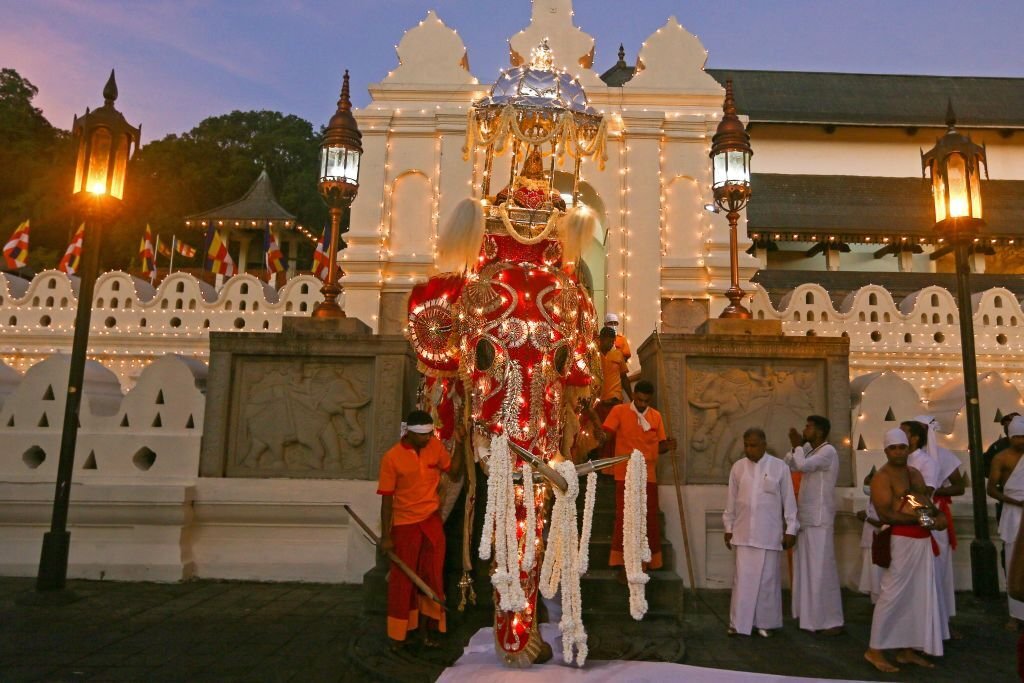
If you visit Kandy in August, you can see the Kandy Asala Perahara ( Kandy Perad). This is a cultural and religious period with many cultural dances, including Eelephant and fire dances.
Secret Toot relic also proudly brings colorful dress-up elephants around the Palace (Temple of the Tooth) and the closest area on the public road.
Thousands of people are visiting Kandy to see this special event. If you plan to visit this event, contact the Temple of the Tooth organizers via the official website, book the sheets, and confirm the dates. It happens from 10 August to 20 August yearly, but some years have different dates.
The Kandy Royal Botanical Garden.
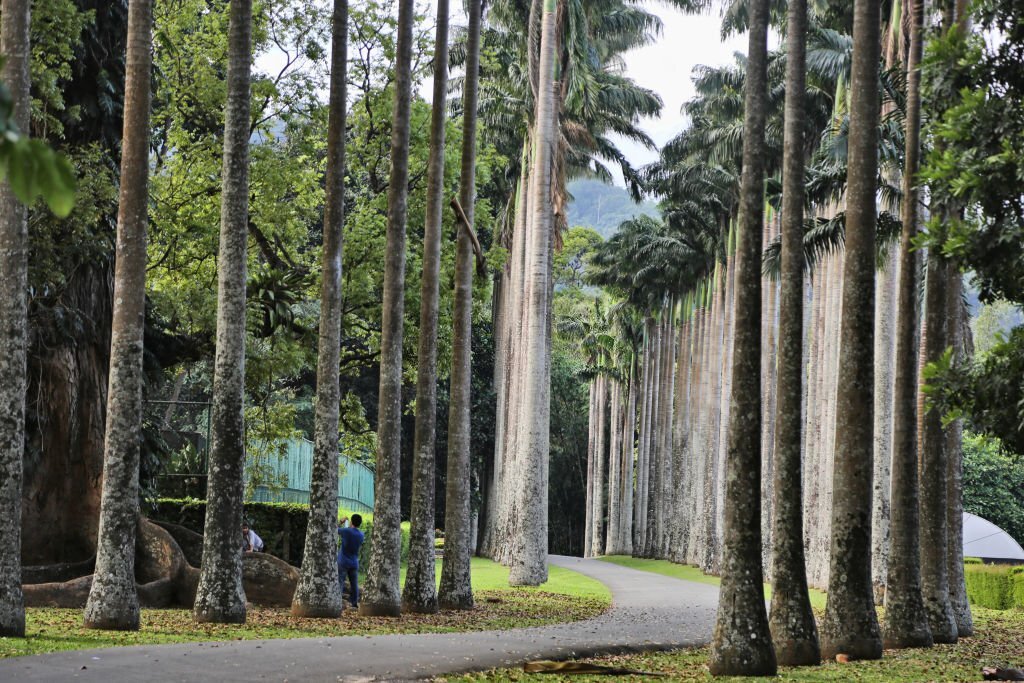
Another tourist attraction is the Kandy Royal Botanical Garden, which is 5.6km from Kandy City (Peradeniya). You can take a taxi, tuk-tuk, bus, or train to visit there; the journey takes 15 to 30 minutes. You need to take an entrance ticket to perch at the entrance.
Also, you can take a Go-kart (Electric car) with a guide that you can pay for separately. Go-kart prices depend on passenger count; there are two-passenger and six-passenger Karts.
With the passenger Kart, you can drive around the Kandy Royal Botanical Garden, and the guide will explain each detail and the places you need to know. If not, you can walk around the botanical garden and see all the trees, plants, and birds. The best time to visit is from 9.30 am to 3.00 pm.
Who visited the Kandy Royal Botanical Garden (Peradeniya)?
Many famous people have visited this botanical garden at different times and planted different plants. You can see those trees, even though some are not worldwide.
Some of the famous characters who visited this garden are King Edward V11, Czar of Russia (1891), King George V and Queen Mary, Elizabeth II, Duke of Edinburgh (Prince Philip) Charles III (Prince Charles), Princess Anne, Lord Mountbatten (United Kingdom), Yuri Gagarin (Soviet cosmonaut), Neil Armstrong (American astronaut and aeronautical engineer) and many others.
What can you see in Kandy Royal Botanical Garden?
This botanical garden covers over 147 acres, providing a home for many trees, birds, and flowers.
The Orchid House.
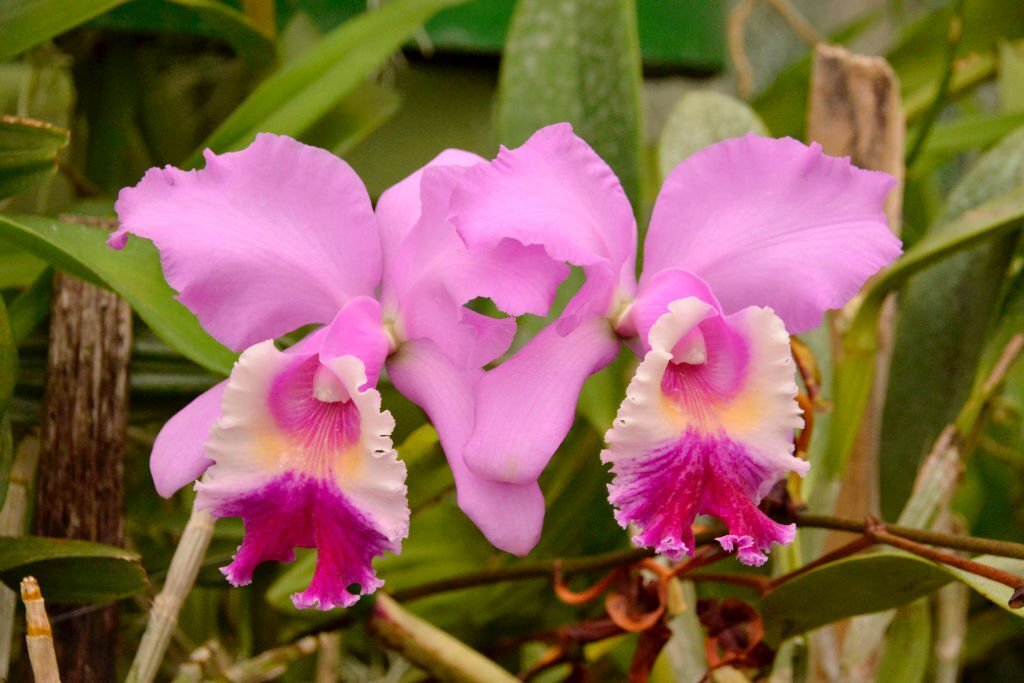
Orchids were once beautiful flowers with different realities that many love to have and see. Kandy also has a vibrant Orchid collection in the botanical garden, including blooms of Cattleya, Dendrobium, Arachnis, Oncidium, Phalaenopsis, Vanda, and their hybrids. Visitors can visit the Orchid house and do the photograph and research.
Giant Bamboo Grove.
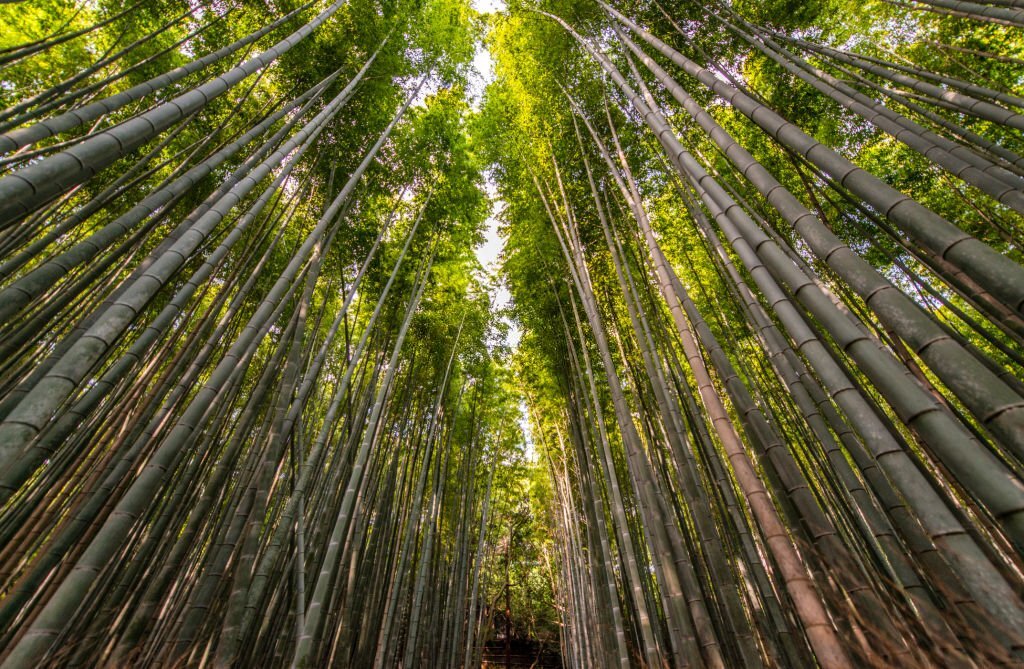
When visiting bamboo gardens, you can see giant bamboo that is thirty meters high. Different varieties from different countries, such as Africa, China, Vietnam, Japan, and India, are planted there. Surround the area, make green colors with bamboo and cold. A collection of bamboo in different colors: green, yellow, and prick.
Fernery.
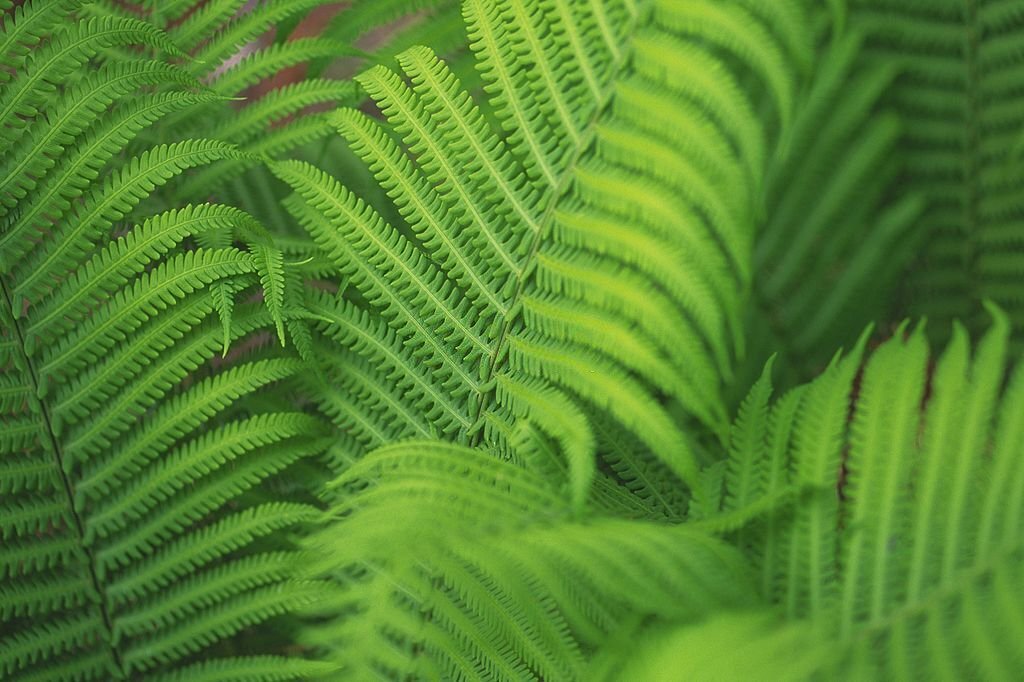
The Royal Botanic Gardens in Kandy are home to a stunning fern exhibit called the Fernery. The fern family is well represented here, with many different types of ferns from around the globe.
The fern family has existed for about 300 million years and has evolved to thrive in various habitats, from lush tropical forests to deserts.
These plants can reach a height of about 30 feet and can be declared non-humid zone plants. They are found in the tropical regions of Southeast Asia and South America.
The branches and plants are different colors and heights, attracting the eye with their beauty and charm. A gift store nearby sells books about these plants and plants to grow.
Japanese Garden.
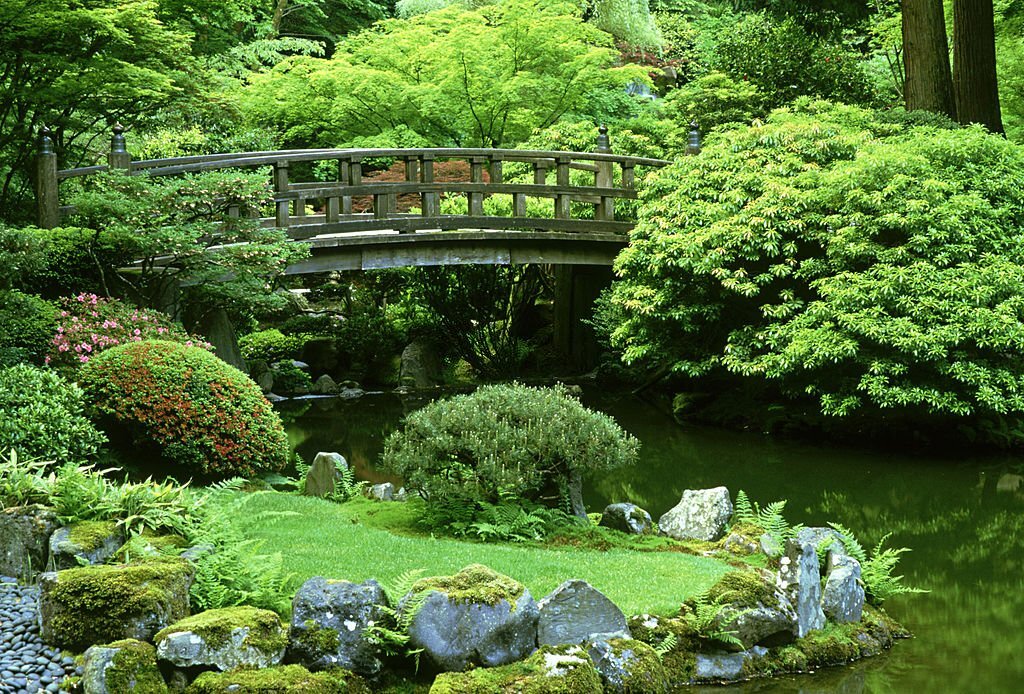
The Japanese garden is a highlight for all tourists who visit this botanical garden because of its beauty and structure. It shows traditional Japanese architecture and gardening methods, such as landscaping, stone lanterns, and trees and bushes.
The middle of the Japanese garden has a water pond with fish and aquatic plants, which is one of the attractions.
Also, a teahouse and a bridge over the pond increase the garden’s beauty and value. Bonsai trees also make it pleasant, which is nice and has few rarities. People can visit the Japanese garden not only to see its beauty but also to see an educational perspective and use it for academic purposes.
Water Garden.
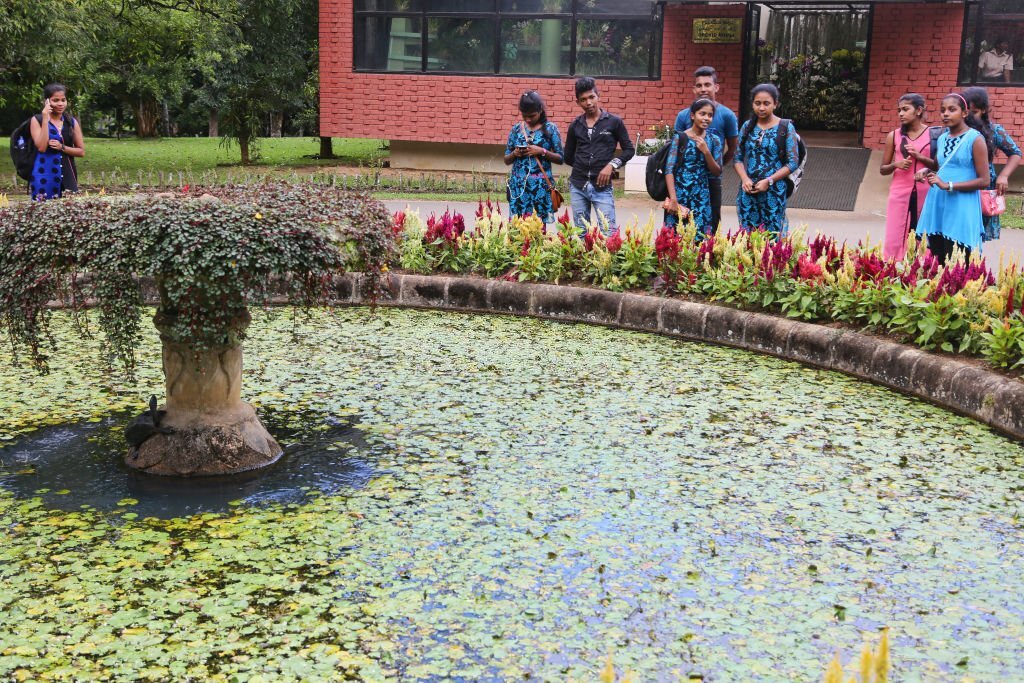
There is a wide variety of plant life, from dense stands of bamboo to delicate orchids, in Kandy’s Royal Botanic Gardens. However, one of the most eye-catching parts of the gardens is the Water Garden, a peaceful haven where visitors may forget the stresses of urban life and reconnect with nature.
The Water Garden occupies a significant portion of this garden’s central location. It is distinguished by a network of ponds and streams that receive water from the Mahaweli River. Water lilies, lotus blossoms, and other varieties of submerged and floating plants may all be found in the ponds.
The Water Garden is mainly famous for its abundant stock of water lilies. These lovely plants float on the water’s surface with their broad, rounded leaves, shading fish and other aquatic organisms from the sun. There are several types of water lilies in the Water Garden, including the bright Nymphaea nuchal and the pleasant-smelling Nymphaea odorata.
The Water Garden has several different kinds of lotus blooms and water lilies. These plants produce prominent, eye-catching colors in various hues, from white to pink to yellow. Because of its spiritual significance, the lotus flower is employed in many religious rites and celebrations.
Visitors to the Water Garden may also see fish, turtles, and frogs, among other aquatic creatures. In addition, numerous tourists often feed the koi and carp that live in the ponds. Birds like herons, egrets, and kingfishers also frequent the ponds and streams.
The Lotus Pool, a big pond with lotus flowers and above trees, is one of the most tranquil spots in the Water Garden. So many tourists come to the Lotus Pool to sit quietly, contemplate, and enjoy the peaceful atmosphere.
The Japanese-style bridge that crosses one of the ponds is another often-visited part of the Water Garden. The bridge is a stunning architecture offering exceptional views of the ponds and gardens below.
Peradeniya Botanic Gardens Railway Station.
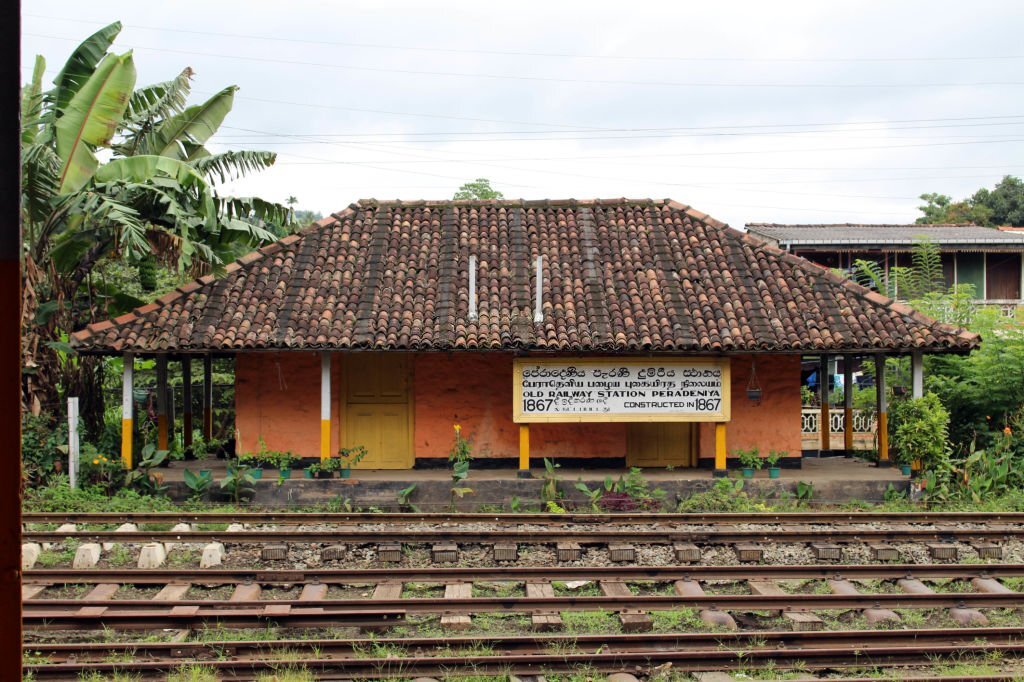
The historic Peradeniya Botanic Gardens Railway Station is located on the outskirts of Kandy. The Royal Botanic Gardens are one of the most visited places in Sri Lanka, and the early 20th-century station that serves them is famous for its stunning architecture.
The station, designed by the renowned architect James G. Smith, was constructed in 1907 during the British colonial era. It was built primarily as a central transportation hub for people visiting the Botanic Gardens, which opened in 1867.
The architecture of the Railway Station combines classic British design elements with indigenous Sri Lankan influences. The station’s front has elegant pillars, arches, and elaborate carvings, contributing to its imposing beauty.
This railway station is known for its stunning clock tower, which is prominently displayed over its main entrance. The building is a popular picture for tourists visiting the Kandy Botanic Gardens and is a well-known station landmark.
Although the station is no longer a major transportation center, it is a cultural and historical icon in Sri Lanka.
The station’s gardens and other architectural details are worth a walk for any curious onlooker. From there, they may get on a train to one of the local cities or towns and take in the beautiful scenery of the Sri Lankan countryside on their journey.
You can also visit Spice Garden, Palm Avenue, Conservatory, Bonsai Collection, and Brassicas.
Kandy Lake.
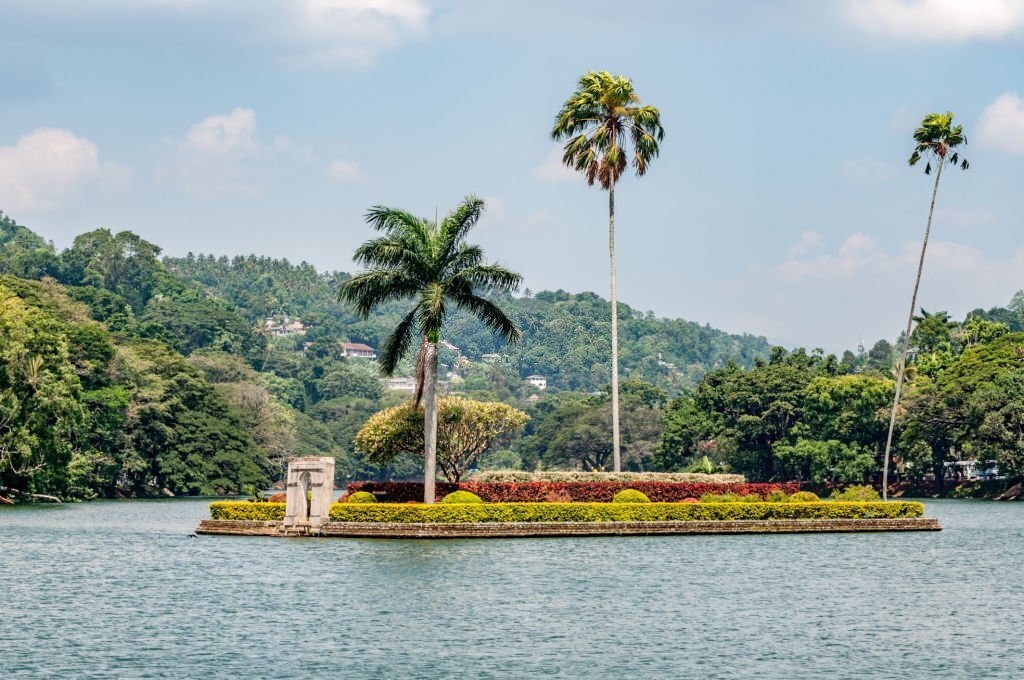
Kandy Lake, or Kiri Muhuda as it’s called locally, is a beautiful artificial lake in the center of Kandy, Sri Lanka. One of the most recognizable symbols of Kandy, it was constructed in 1807 by the last ruler of the Kandyan Kingdom, ruler Sri Wickrama Rajasinghe. The lake, which is 6.544 square meters in size, is a popular tourist site because of its proximity to several attractions and abundant surrounding vegetation. This page will discuss the importance of Kandy Lake and the many fun things to do there.
Kandy Lake was a major project that took several years and the efforts of thousands of workers to complete. The monarch constructed a lake to improve the city’s look and ensure the locals always had access to clean water. The lake is an artificial reservoir created by damming the Bogambara River, which runs through the city. The monarch also dug a network of canals to carry the water to different areas of the town for agriculture and other uses.
The lake has grown significantly throughout Kandy’s history and is now integral to the city’s culture. The annual Kandy Perahera celebration, one of the most significant cultural festivals in Sri Lanka, is used for several ceremonies. For leisure, the monarch constructed a pavilion on one of the lake’s islands, the Walakulu Bamma. The pavilion has become a symbol of Kandy due to its history as a venue for many events, including concerts and dance performances.
The Royal Palace Park on the lake’s eastern bank is another popular destination for Kandy visitors. This public park, previously part of the king’s royal complex, now has several lovely gardens and walking routes. A stroll around the park affords breathtaking vistas of the lake and the hills beyond.
Kandy Lake Attractions.
Travelers to Kandy Lake can do things while they’re there besides seeing the sights. Taking a boat out on the lake is a prevalent pastime. Visitors may take a boat trip at any time throughout the day to take in the beautiful scenery of the lake and the hills in the background. During the Kandy Perahera event, hundreds of boats join a parade around the lake while decked with bright lights.
Kandy Lake offers a wide variety of exciting activities for thrill-seekers. Visitors may paddle around the lake at their leisure in kayaks or canoes. The lake is surrounded by a network of hiking routes, many of which provide breathtaking panoramas of the lake and the hills beyond.
Kandy Lake is aesthetically pleasing, historically significant, and has a long and fascinating past. It was first constructed in 1807 as part of King Sri Wickrama Rajasinghe’s aim to improve the city’s aesthetics and provide a reliable water supply for its residents.
Udawatta Kele Sanctuary.

Udawatta Kele Sanctuary is approximately 2.5 km away in Kandy City. You can take a taxi to visit there; the journey takes 10 to 15 minutes. It is also known as Royal Forest Park, and its 257 acres are big. It is a very calm and quiet place and the best place to visit to relax, do educational research, and see the beauty.
Histories and Contexts.
According to historical data, the Udawatta Kele Sanctuary was established in the 14th century under King Wickramabahu III’s reign. The king wanted to create this forest to protect the watershed that supplied Kandy. The Royal family used this area for many years for hunting and recreation.
Under the British colonial era in 1856, the Udawatta Kele forest was declared a protected area. This helped visitors to the forest’s reserves, tourists, and even scientists visit the forest. Presently, The Department of Wildlife Conservation oversees this sanctuary.
To enter, you need a ticket, which you can take at the entrance gate. Walk through pathways and trees with animals such as monkeys, deer, porcupines, and birds making their home in the sanctuary. Some of them are the Sri Lankan hanging parrot, the yellow-fronted barbet, and the Sri Lankan blue magpie.
At the edge of the forest, Udawatta Kele Sanctuary is home to the beautiful Kandy Lake. You can see some tourists and local visitors enjoying the fishing, especially on the weekend.
Ceylon Tea Museum Kandy
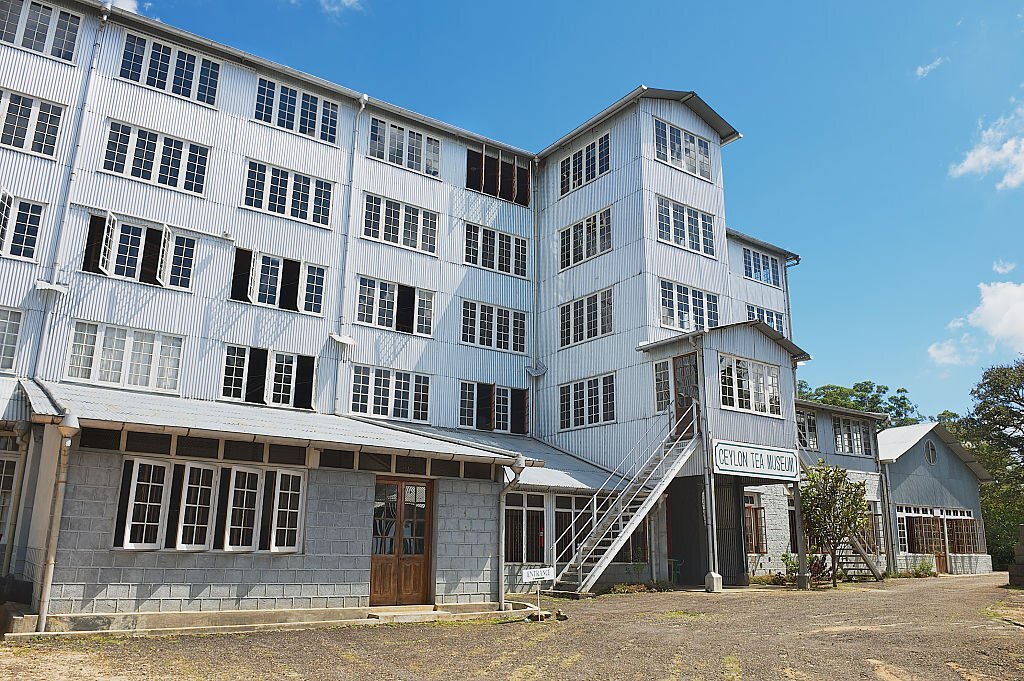
The Ceylon Tea Museum in Kandy, Sri Lanka, is a must-see for anybody interested in learning more about the island nation’s intriguing and lengthy relationship with the tea industry. The museum is located in Hantane, near the heart of the city, in a building formerly a tea factory in the early 20th century.
Curious visitors can find a wealth of information on the whole tea-making process, from planting and picking tea leaves through processing and packaging. Displays, interactive exhibitions, and multimedia presentations are available across the museum’s four levels.
The tea factory tour, which takes guests through every step of the process, from withering and rolling the leaves to burning and sorting the finished product, is a museum highlight. In addition, historical tools and equipment are on display so guests can compare and contrast them to contemporary methods.
The tea tasting room is another popular display, as it allows guests to try some of Sri Lanka’s best teas and learn about the many types, tastes, and preparation processes. Tickets may be purchased at the museum’s front desk or reserved in advance through their website seven days a week.
What other places can you visit in Kandy besides those explained above?
- The Kandy City Centre retail mall is a cutting-edge retail complex in the middle of the city. Shopping, dining, and entertainment opportunities abound, making this a favorite among residents and visitors.
- At Kandy View Point, visitors may take in breathtaking vistas of the city and the hills beyond. It is accessible by automobile or on foot, and many people go there to watch the sunset.
- The Kandy Lake Club is a colonial-era social club located on the banks of Kandy Lake. It has a pool, tennis courts, and stunning colonial architecture.
- The Kandyan kings and queens called the Royal Palace of Kandy home before the British colonial era. It was converted into a museum in the modern day, displaying antiques from the Kandyan era.
- The Ceylon Tea Trails is a network of hiking paths through the beautiful tea plantations outside Kandy. Tea estates sometimes provide guided tours, where guests can see where their tea comes from, learn how it’s processed, and even try a few varieties.
- The Bahirawakanda Temple is a Buddhist shrine perched on a hill above Kandy. There’s a giant Buddha statue; you can see the whole city up there.
- The National Museum of Kandy, a modest yet informative museum, showcases the Kandyan Kingdom’s history and culture through antiques, paintings, and displays.
References
Dinesh. (2023, December 27). Places to visit around Kandy. Sri Lanka Tour Packages. https://www.lankasafetours.com/places-to-visit-around-kandy/
Dsa, J., Dsa, J., & Dsa, J. (2023, December 24). Visit Kandy, Sri Lanka: Your travel guide – That Goan girl. That Goan Girl. https://www.thatgoangirl.com/visit-kandy-sri-lanka-your-travel-guide/
Kandy Tours & Travel Information – Sri Lanka – Asia Tours. (n.d.). https://www.asiatours.com/Kandy/
Peradeniya Botanical Garden. (n.d.). Peradeniya Botanical Garden. https://www.botanicgardens.gov.lk/service/royal-botanic-gardens-peradeniya/
Sri Dalada Maligawa – Temple of the Sacred Tooth Relic. (2024, May 8). Sri Dalada Maligawa | The Temple of the Sacred Tooth Relic. https://sridaladamaligawa.lk/
Thrillophilia. (n.d.). https://www.thrillophilia.com/. https://www.thrillophilia.com/destinations/kandy/places-to-visit
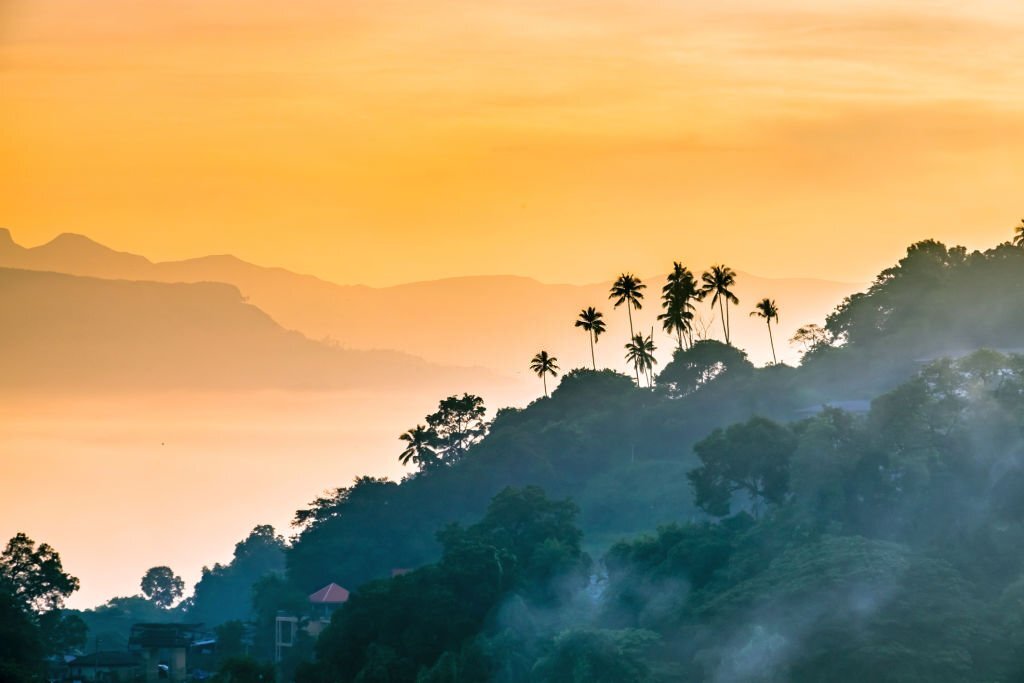
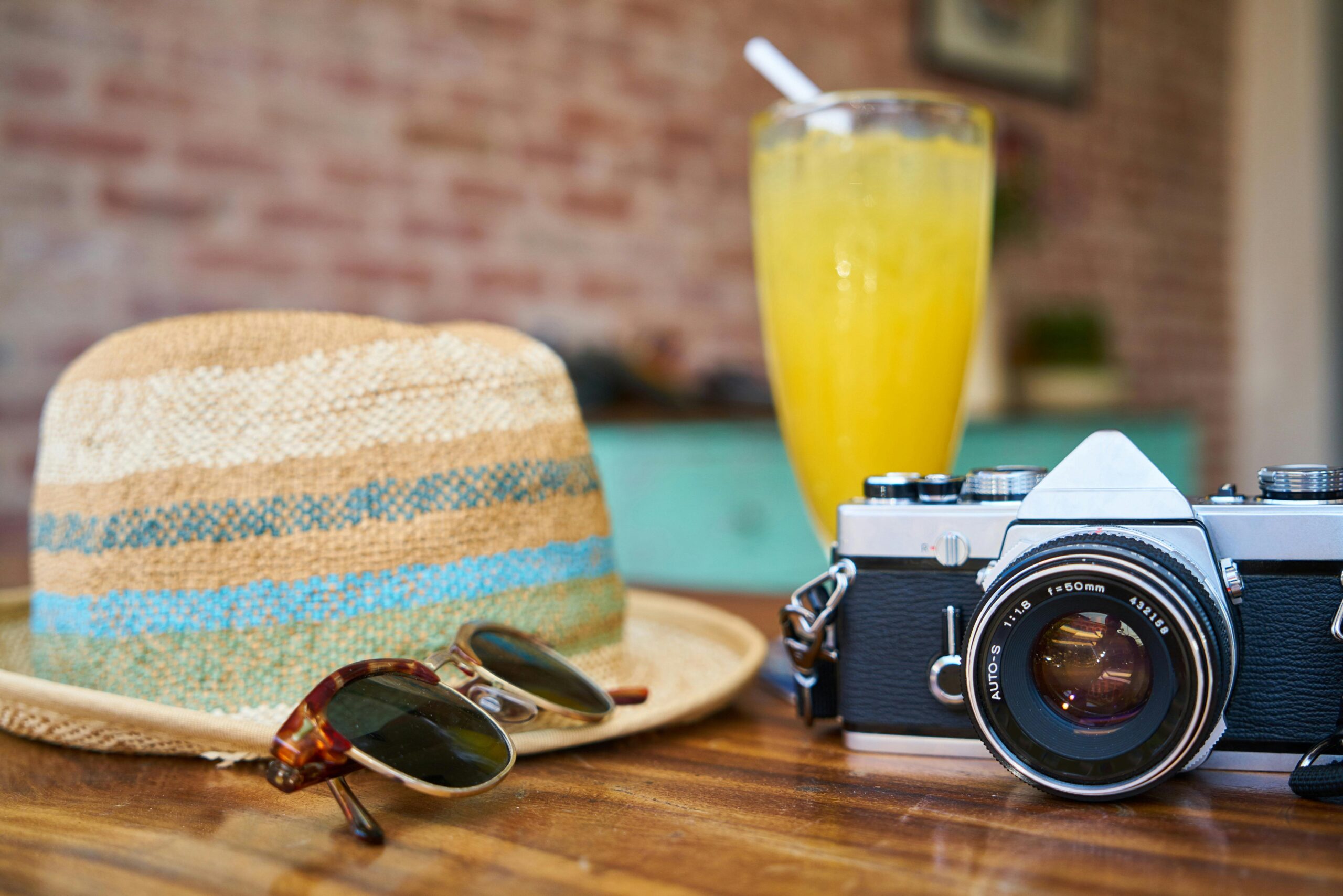

Leave a Reply